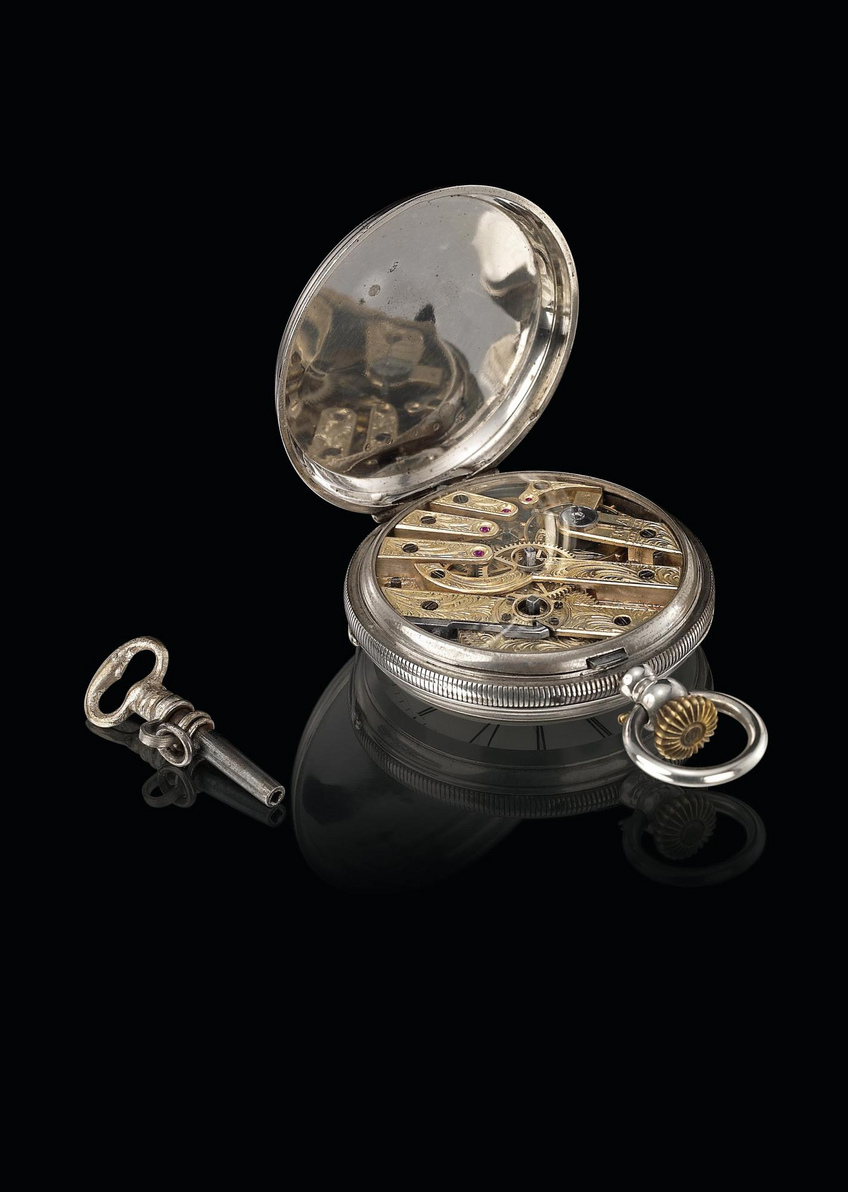
Girard-Perregaux, the first Swiss watchmaker in Japan, partners up with the Neuchâtel Ethnography Museum for the Imagine Japan exhibition
Girard-Perregaux, the first Swiss watchmaker in Japan, partners up with the Neuchâtel Ethnography Museum for the Imagine Japan exhibition
Neuchâtel, February 7, 2014 – Yesterday, the high-end Swiss watch Manufacture Girard-Perregaux had the pleasure of announcing its partnership with the Neuchâtel Ethnography Museum (Musée d’ethnographie de Neuchâtel – MEN) for the Imagine Japan exhibition, which will open its doors on June 19th
The introductory part of this exhibition organized by the MEN was unveiled on the historically significant date of February 6, 2014, the official 150-year commemoration of the Treaty of Amity and Commerce between Switzerland and Japan.
Pocket watches that were imported to Japan by François Perregaux, the central character responsible for forging the first steps of Swiss watchmaking in the Land of the Rising Sun in the middle of the 19th century, were displayed during the exhibition. Properties of the Girard-Perregaux Museum, these timepieces are a priceless testament of the links that have bonded together the Chaux-de-Fonds Maison and the Japanese archipelago for more than one and a half centuries. Numerous officials and dignitaries, including Georges Martin, Deputy Secretary of State to the Federal Department of Foreign Affairs and M. Yukihiro Nikaido, Ministre and Chargé d’affaires a.i, attended the commemorative ceremony.

As part of the 150th anniversary celebration, Girard-Perregaux is also presenting other watches in Tokyo that experienced the same fate, in The Mastery of Time exhibit, organized by the Fondation de la Haute Horlogerie (FHH), of which the brand is a partner.
150 years ago on February 6, 1864
In the Choji temple in Edo (Tokyo), a treaty of amity and commerce was signed between Swiss emissaries and representatives of the Imperial Japanese government. At the heart of exceptional relations between Switzerland and Japan, this bilateral agreement was a diplomatic and economic success: it allowed Swiss watchmakers to officially export their products to the Japanese market.
Aime Humbert, architect behind the first Swiss-Japanese treaty
The man responsible for this mission was Aimé Humbert (1819-1900) of Chaux-de-Fonds, appointed as "Envoy Extraordinary and Minister Plenipotentiary of the Swiss Confederation in Japan" by the Federal Council for this task. Landing on the island in April 1863, Humbert was forced to wait nearly one full year before Japanese authorities agreed to discuss the matter. While waiting, he took advantage of these months to visit the country. He fully immersed himself, took notes, collected testimonials, drawings, prints, photographs, etc., which would eventually make up the base material of the book he planned to publish on Japan.
It was one of the oldest residents of the French-speaking community in Japan that welcomed Aimé Humbert and his Swiss companions in this country: watchmaker François Perregaux.
François Perregaux, pioneer of Swiss watchmaking in Japan
Born in 1834 to a family of important watch merchants from Le Locle, the brother of Marie Perregaux - who founded Girard-Perregaux with her husband Constant Girard, which to this day still bears their combined last names - François Perregaux left Switzerland in 1859 for Asia. Commissioned by Union Horlogère to establish an export post, he set up shop in Yokohama in 1860, becoming the first Swiss watch merchant to be established in the Land of the Rising Sun, just a few years before the signing of the aforementioned treaty of amity and commerce. In 1865, the man originally from Le Locle founded the company F. Perregaux & Co in Yokohama and would be, until his death in 1877, the official representative of Girard-Perregaux.
Perregaux, Humbert and the fascination with Japan
Beginning before their meeting in Japan, the correspondence between the two men continued after Humbert's departure. The diplomat urged the watchmaker to keep him abreast of the activities and affairs going on within the country. Working on writing his own piece on Japan, Humbert asked Perregaux to send any oral accounts, stories or legends, etc. that could further complete the items that he collected on-site.
As demonstrated by the letters preserved in the State Archives of Neuchâtel, Humbert requested that Perregaux dispatch photographers to Yokohama to document the most recent goings-on via snapshots and then sent them to him. Through these actions, the Girard-Perregaux ambassador on the other side of the Indian Ocean contributed to putting together the famous work by Aimé Humbert. The fruit of this labor, Le Japon Illustré [Japan Illustrated], appeared in 1870 and was published in two volumes by Hachette in Paris.
About the Neuchâtel Ethnography Museum (MEN)
A product of the Cabinet of Natural History of General Charles Daniel de Meuron, given to the City of Neuchâtel in 1795, the MEN, established in the villa donated by James-Ferdinand de Pury, was opened in 1904. Its complete collection of works is made up today of 40,000 objects hailing from five continents. Internationally renowned for its relevant temporary exhibitions, the MEN offers visitors original reflections on subjects related to current affairs and essential questions concerning the functioning of human societies.
Aimé Humbert Collection
Within its walls, the MEN houses an exceptional graphic collection on Japan from the 1860s, composed of more than 2,500 images, photographs, prints, drawings and paintings - amassed by the Neuchâtel native Aimé Humbert to write and illustrate his book Le Japon Illustré (Japan Illustrated), published in 1870 by Hachette in Paris. Having been the subject of significant research, digitizing, restoration and identification, a portion of this previously unseen collection was presented to the public during the exhibition organized by the MEN celebrating the 150th anniversary of the Treaty of Amity and Commerce between Switzerland and Japan.



